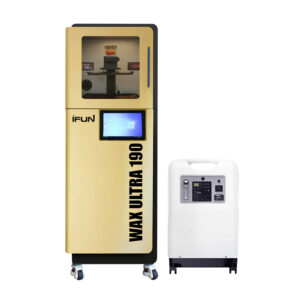3D resin printer calibration is a critical step to achieving accurate and high-quality prints. If your 3D resin printer produces failed prints, adjusting calibration settings can improve exposure time, resolution, and layer adhesion.

Why 3D Resin Printer Calibration Matters
Proper 3D resin printer calibration ensures:
- Accurate dimensions and fine details.
- Strong layer adhesion and fewer print failures.
- Better print bed adhesion and smoother surface quality.
Leveling the Build Plate for Accurate Calibration
A properly leveled build plate prevents uneven printing and adhesion issues.
- Loosen the build plate screws to allow for manual adjustment.
- Place a piece of paper on the LCD screen and lower the plate until there is slight resistance when pulling the paper.
- Tighten the screws to lock the position in place.
- Test with a small print to ensure even adhesion.
Exposure Time Calibration for Precision
Incorrect exposure time affects print details and layer bonding.
- Use a 3D resin printer cones of calibration test to determine the best exposure settings.
- Print a 3D printer calibration test model with different exposure times.
- Inspect for overexposure (blurred edges) or underexposure (uncured layers).
- Adjust the settings until fine details are crisp and layers adhere well.
XY Resolution Calibration for Dimensional Accuracy
For precise dimensional accuracy, calibrate the XY resolution:
- Use a 3D printer calibration test print with fine geometric patterns.
- Check for distortions or missing details.
- Adjust the pixel size in your slicing software until the printed dimensions match the intended design.
Layer Height and Z-Axis Calibration
Z-axis calibration ensures smooth layering:
- Set appropriate layer height based on print resolution needs.
- Run a 3D print calibration test to check for layering defects.
- Adjust Z lift speed and delay settings if needed.
Print Bed Adhesion and Supports for Stability
Poor adhesion causes warping and print failures:
- Ensure a properly leveled print bed.
- Use an appropriate raft or brim for better adhesion.
- Optimize support settings to prevent model detachment during printing.
For additional support techniques, refer to the Chitubox Calibration Guide.
Regular Maintenance and Recalibration for Consistency
Frequent use requires periodic calibration:
- Re-level the build plate after several prints.
- Check exposure time when switching resins.
- Clean the FEP film and resin vat to prevent contamination.
FAQ: Common Questions on 3D Resin Printer Calibration
Q: How often should I calibrate my 3D resin printer?
A: You should calibrate every time you change resin or after 10-15 prints.
Q: What is the best way to test exposure time?
A: Use a cones of calibration test or AmeraLabs town test to find the optimal settings.
Q: How do I calibrate my 3D resin printer for high-detail prints?
A: Adjust exposure time, XY resolution, and Z-layer height while using a precise 3D printer calibration test.
Achieving Perfect 3D Resin Printer Calibration
Calibrating a 3D resin printer involves fine-tuning exposure time, build plate leveling, and resolution settings. Regular 3D printer calibration improves accuracy, reduces failures, and enhances print quality.
By following these steps and running 3D printer calibration tests, you can achieve professional-quality prints every time.

